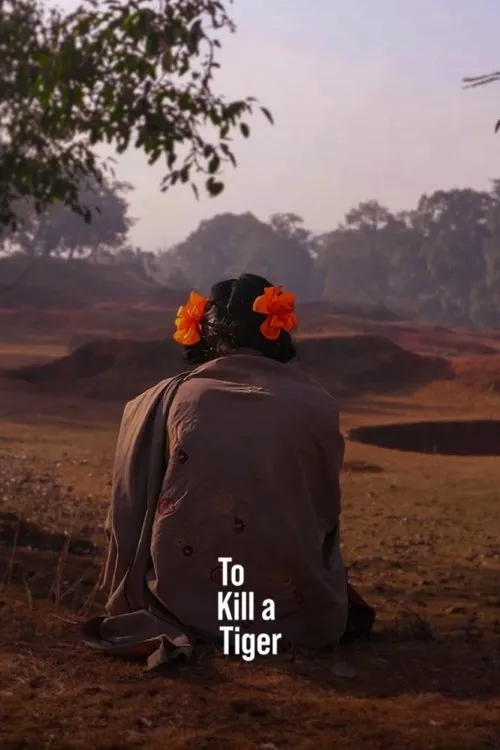To Kill a Tiger

Plot
To Kill a Tiger is a gripping and poignant drama that tells the story of Ranjit, a determined and fiercely protective father living in rural India. The film begins with a jarring and disturbing scene: Ranjit's 13-year-old daughter, Nalini, is brutally gang-raped by a group of local men. The event sends shockwaves through the tight-knit community, but what unfolds next is as remarkable as it is disturbing. As news of the rape spreads, Ranjit initially faces immense pressure from the community to keep quiet and avoid any further controversy. However, instead of succumbing to the social norms, Ranjit decides to take a bold and unprecedented step: he declares that he will support his daughter through the ordeal, ensuring that she receives the justice she deserves. This decision is met with fierce resistance from the community, who believe that reporting the crime and prosecuting the perpetrators will shame and ostracize them. Ranjit's determination, though unwavering, is met with resistance not only from the community but also from the police and the justice system. The initial response from the authorities is characterized by apathy and a lack of urgency. The police are reluctant to register a complaint, citing concerns about the victim's age and the potential backlash from the community. The medical examination, performed several days after the assault, is botched, and vital evidence is compromised. The victim is treated with indifference and suspicion, while the perpetrators are treated as privileged individuals above the law. As the fight for justice begins, Ranjit's family, including his wife, Nalini, and their son, face ostracism from the community. The neighbors, friends, and even relatives turn against them, shunning them for speaking out against the perpetrators. Ranjit's wife is particularly traumatized by the event and struggles to come to terms with what has happened. Ranjit's son, Rakesh, is initially torn between loyalty to his family and loyalty to the community. The community's hostility and aggression escalate as Ranjit continues to push for justice. A group of local politicians and influential individuals, fearing a loss of face and potential protests, pressure the police to dismiss the case. Ranjit is confronted by angry mobs, threatening his family and his property. The local police station is besieged by crowds, demanding that Ranjit drop the case and allow the perpetrators to go unpunished. Despite the overwhelming opposition, Ranjit refuses to back down. He files a complaint, and with the help of a courageous lawyer, the case begins to move forward. However, the process is long and arduous, and Ranjit faces a multitude of challenges, including false accusations, intimidation, and manipulation. The lawyer is eventually forced to withdraw from the case, citing concerns for his safety. The film takes a darker turn as Ranjit becomes increasingly isolated and despondent. His determination begins to wane, and his relationships with his family disintegrate. Nalini, struggling with the trauma, becomes withdrawn and isolated. Ranjit's wife, overcome by grief and despair, loses faith in the system. The family is on the verge of collapse, and Ranjit's resolve is tested to its limits. In a stunning twist, Ranjit's determination is reignited when a group of activists, inspired by his courage, join him in his fight for justice. The activists, led by a young woman, begin to raise awareness about the case, using social media and local media to highlight the injustices faced by the family. A wave of support begins to build, with neighbors and local residents coming forward to express their outrage and solidarity with the family. As the community begins to turn in Ranjit's favor, the perpetrator's families and influential individuals start to feel the heat. The case gains national attention, and the government is forced to take notice. The perpetrators, emboldened by their perceived immunity, begin to open up, revealing a shocking pattern of violence and corruption. The film culminates in a dramatic confrontation between Ranjit and the perpetrators, who claim that Nalini is lying and that the assault was a consensual act. Ranjit's final act of defiance is to reveal the testimony of the young woman who had been the first to come forward with the allegations. Her bravery had initially been suppressed, dismissed as a "whore" and a "liar." Ranjit's powerful speech is a testament to his love for his daughter and his determination to ensure that she receives justice. The film ends on a bittersweet note, with Nalini, now in her early twenties, receiving a verdict. The court finally delivers justice, convicting the perpetrators, but the trauma has left an indelible mark on the family. Ranjit's courage and unwavering determination have inspired a nation, but the journey has left him broken, haunted by memories of his daughter's assault. The film ends with a shot of Nalini, now a strong and determined young woman, looking out into the distance, her eyes haunted but her spirit unbroken.
Reviews
Recommendations




